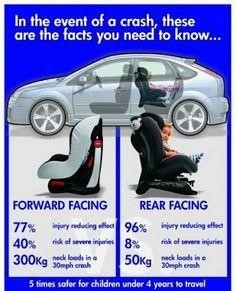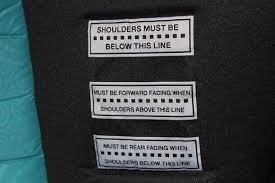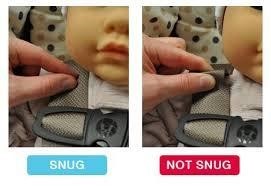Our goal here at Rockabye Baby Hire has always been to provide our customers with the most up to date information, products and resources to empower you to make informed decisions for your families.
You may be getting ready to return your hired capsule or carseat and that means you will be doing some carseat shopping. Our guide has been put together by our Accredited Restraint Fitting Team to help you navigate the choices, options and products that are on offer and help you to choose the right seat for your child, your needs and your budget.
When we arrive at a baby shop, instinctively we will gravitate to either a label or logo we recognise, or a colour we like. However choosing the correct product for your child is much more complex than that. We have set out our top tips as well as information on available products below for you. Of course this list is not exhaustive but we have done our best to be as comprehensive as possible. As always, if you need our help we are just a phone call away.
Choose the correct type of restraint for your child
Ensure that the seat you are considering is the right size for your child and that it meets Australian Standards and has the Australian Standards logo sticker present. Contrary to popular belief, Australian Standards for car seats are in fact among the toughest in the world ensuring the best possible protection for our children on the road.
In Australia it is illegal to purchase or use a car seat that does not comply with the Australian/New Zealand Standard 1754 – even if you are visiting. Always look for the certification mark AS/NZS:1754 on the car seat you choose for your child.
Choose for the childs size not by their age
Seats are not graded by age of children but by their size. The size of children can vary – two 4 year olds can be entirely different heights and weights so check that your childs fits within the shoulder height marker label for the specific model of car seat you are considering. Just like when you are buying jeans – you take your legs with you to ensure the product fits so take your child with you to test the restraint does in fact fit them.
Is it easy to use?
You’ll be using this seat a lot. Is it easy for you to use? When you go to the hire company or the baby shop ask them to put the restraint on your backseat in the position it will be fitted in. How easy is it for you to get your child in and out of this restraint?
Is it easy to adjust?
We also suggest you test the adjustment mechanisms on the inbuilt harness – do they loosen and tighten easily? And when its time to adjust the shoulder strap height up a new level can you do that from the front of the seat or do you have to completely uninstall it, adjust them then try and reinstall it each time?
Is it affordable?
Price is not a great indicator for quality – and that is a good thing. There is something available for most budgets on the market today. Do not feel like you are a bad parent or being cheap if you can not afford $700 for a carseat. The biggest price tag does not ensure you have the safest seat. Have a look at the CREP results. The Child Restraint Evaluation Program (CREP) is a consortium of government agencies and motorist organisations whose aim it is to provide independent and consistent information on the levels of child protection from injury in a crash provided by individual car seats and the ease with which they can be used correctly using a very simple star system with 1 out of 5 being the lowest score and 5 out of 5 the highest.

Longevity
How long can you use this carseat for? Try and find a restraint with the highest shoulder height markers for ending use so you can use the seat for a long period of time. If you hope to keep your child rear facing then an extended rear facing seat with a tall shoulder height marker will be idea for you. Or maybe consider getting one of the new Type G restraints – these use the inbuilt harness up to an average 8 year old meaning you do not won’t ever have to buy a booster seat.
The laws are the minimum
The road laws relating to kids and cars are minimums. We do not aim for the minimum safety – but for the maximum. So keep your child in their restraint for as long as they still fit in it. When your child reaches 6 months that does not mean its time to turn them forward facing. Just because they turn 3 you do not put them in size 3 shoes – if theseat still fits – keep using it.
Use their age as a guide only.
- Children under the age of six months must use a rear facing car seat
- Children aged six months to four years can use either a rear facing car seat or a forward facing car seat.
- Children aged four years to approximately seven years must travel in a forward facing car seat or booster seat.

Use the shoulder height marker labels
Newer seats nowadays all have a label on the restraint showing you exactly where the childs shoulders can be to safely use the seat. Shoulder height markers make it so easy for parents and carers to establish if a child car seat is suitable for their child and when the child needs to have the shoulder straps adjusted or when they are ready to move to the next child car seat.
Shoulder Height Markers, located on the inner side of the seat, prompt parents and carers to ensure their childs seats, and associated harnesses, are adjusted at the right stages of the childs growth to maintain optimal safety in the event of an accident.
Your child should remain in a rear facing seat or position until their shoulder is in-line or above the forward facing height marker.
Your child should remain in a forward facing seat until their shoulder height is above the upper shoulder height marker.
Note: There is a slight difference between rear and forward facing and that relates to the dynamics in the event of a collision.
Ensure your restraint is installed correctly
We do not necessarily believe that you require professional installation of your restraint however there are a lot of belts, buckles and pathways to contend with. Before you begin, ensure you have read the instruction manual for your restraint in full and be confident that you understand how to install your seat. If you are uncertain please do not hesitate to contact us or a local restraint fitting station for advice. Unfortunately there is a lack of understanding around the power of collision dynamics and there is an idea in the community that a car seat must be ‘rock solid’ postfitment to be safe. This is incorrect. The Australian Standard testing procedures that these products are subjected to are stringent and demanding.
The more rigidly a restraint is attached to the vehicle chassis, the more collision force the infant will be subject to. Imagine if you will the catching arm of a cricket player. If it were completely rigid and unmoving it would shatter into pieces – exactly the same with carseats. Even the new rigid ISOFIX seats have a hinge that allow for some up and down movement to counter this possibility.
Overtensioning a restraint when installing it can cause stress damage to both the restraint and/or the vehicle seats unecessarily. A restraint that is fitted correctly does allow for some movement but no more than 2.5 cms from side to side at the belt path end of the restraint. Shaking your restraint around at the top end (where the top tether begins) is not an accurate test of correct fitment and will do nothing but loosen your restraint and perhaps leave the seat requiring refitment.
Use the top tether and harness straps correctly
We have had customers return capsules or carseats and inform us that they didn’t use the top tether because it was annoying or took up too much time to deal with.
Please – use the top tether. In an accident it serves as a very important tool to minimise the possibility of yourchild being injured in the crash.

When you are using the inbuilt harness ensure that the shoulder straps are:
- at the correct height for your child
- there are no twists in the harness that is on your child. Twists here can cause significant injuries so ensure at every use that there are no twists in the harness – fitted firmly with no slack (a good way to test is to try and pinch the belt together. If you can not pinch any fabric it is firm enough).
We hope that keeping our list of tips and information in mind will help you to make the right choice. If you have any concerns about child car seat use or how to choose please do not hesitate to contact our Team on 1300 859 775 who will be very happy to assist you.
Kind regards
Rock-A-Bye Baby Equipment Hire
Sydney’s Favorite Hire Company Ph: 1300 859 775 https://www.rockabyebabyhire.com.au
